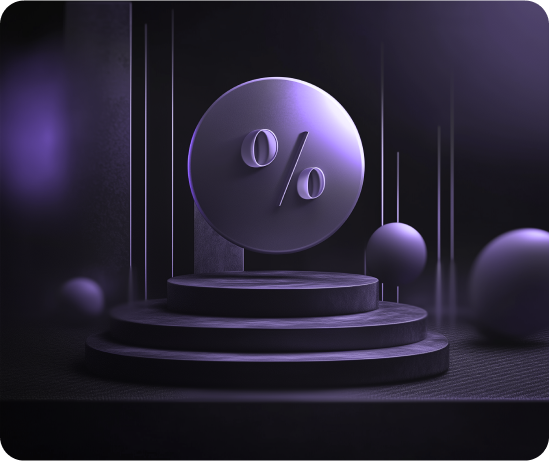Variety of orders for trading
Order Types
A limit order allows you to set the price at which you want to buy or sell an asset. It will only be executed when the market price reaches the level you specify. This allows you to control the entry and exit points, providing a more favorable trading environment.
A market order is executed instantly at the current market price. It is used when you need to enter or exit a position quickly. This type of order guarantees execution, but cannot guarantee price, which is important to consider when trading in a high volatility environment.
A stop order is activated when the price of an asset reaches a predetermined level. It is typically used to limit losses or protect profits by allowing positions to be automatically closed when the price moves unfavorably. This helps minimize risk for investors.
A take profit order sets a price level at which your position will automatically close with a profit. This allows you to lock in profits without waiting for the trend to end and effectively manage your investment, minimizing the risk of loss.
A stop-loss order helps protect your investment by closing a position if the price of an asset reaches a set loss level. It is an important risk management instrument that allows investors to minimize losses and preserve capital on adverse market conditions.
A trailing stop order allows you to set a dynamic stop level that follows the price of an asset. It helps to lock in profits when the price moves in your favor, but automatically closes the position if the price starts to decline. It is an ideal instrument for traders looking to maximize profits and minimize risk.
 Start trading
Start trading
Limit Order
A limit order allows you to set the price at which you want to buy or sell an asset. It will only be executed when the market price reaches the level you specify. This allows you to control the entry and exit points, providing a more favorable trading environment.
 Become a trader
Become a trader
Market Order
A market order is executed instantly at the current market price. It is used when you need to enter or exit a position quickly. This type of order guarantees execution, but cannot guarantee price, which is important to consider when trading in a high volatility environment.
 Become a trader
Become a trader
Stop Order
A stop order is activated when the price of an asset reaches a predetermined level. It is typically used to limit losses or protect profits by allowing positions to be automatically closed when the price moves unfavorably. This helps minimize risk for investors.
 Become a trader
Become a trader
Take Profit Order
A take profit order sets a price level at which your position will automatically close with a profit. This allows you to lock in profits without waiting for the trend to end and effectively manage your investment, minimizing the risk of loss.
 Become a trader
Become a trader
Stop Loss Order
A stop-loss order helps protect your investment by closing a position if the price of an asset reaches a set loss level. It is an important risk management instrument that allows investors to minimize losses and preserve capital on adverse market conditions.
 Become a trader
Become a trader
Trailing Stop Order
A trailing stop order allows you to set a dynamic stop level that follows the price of an asset. It helps to lock in profits when the price moves in your favor, but automatically closes the position if the price starts to decline. It is an ideal instrument for traders looking to maximize profits and minimize risk.
 Become a trader
Become a trader
Accounts
 Basic
Basic Pro
Pro VIP
VIP
Flexibility and transparency
Commission
We offer competitive commissions to reduce costs on every trade. Our terms and conditions are focused on transparency, allowing clients to better plan their trading operations and optimize costs. Our commission structure is flexible and adapted to different trade volumes. This ensures favorable conditions for all traders, regardless of activity level, and creates a favorable environment for sustainable capital growth.










